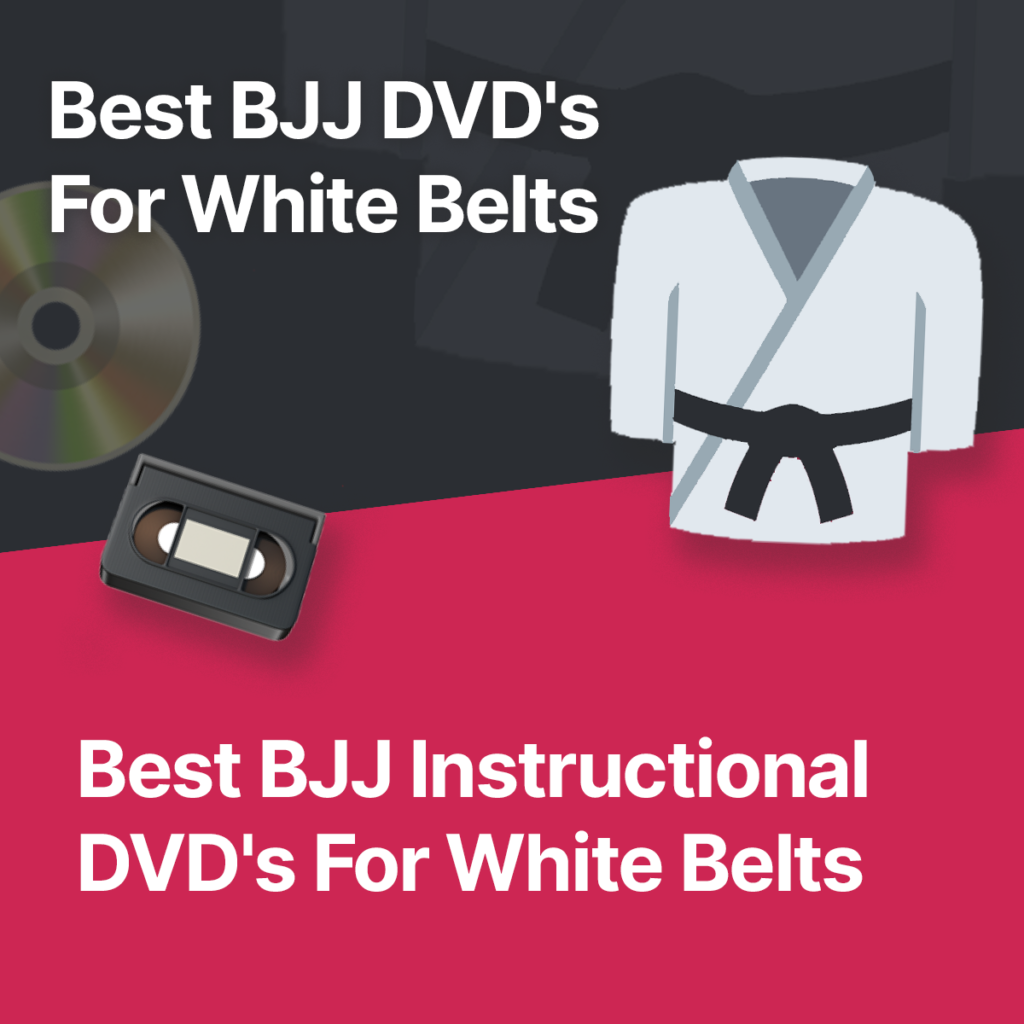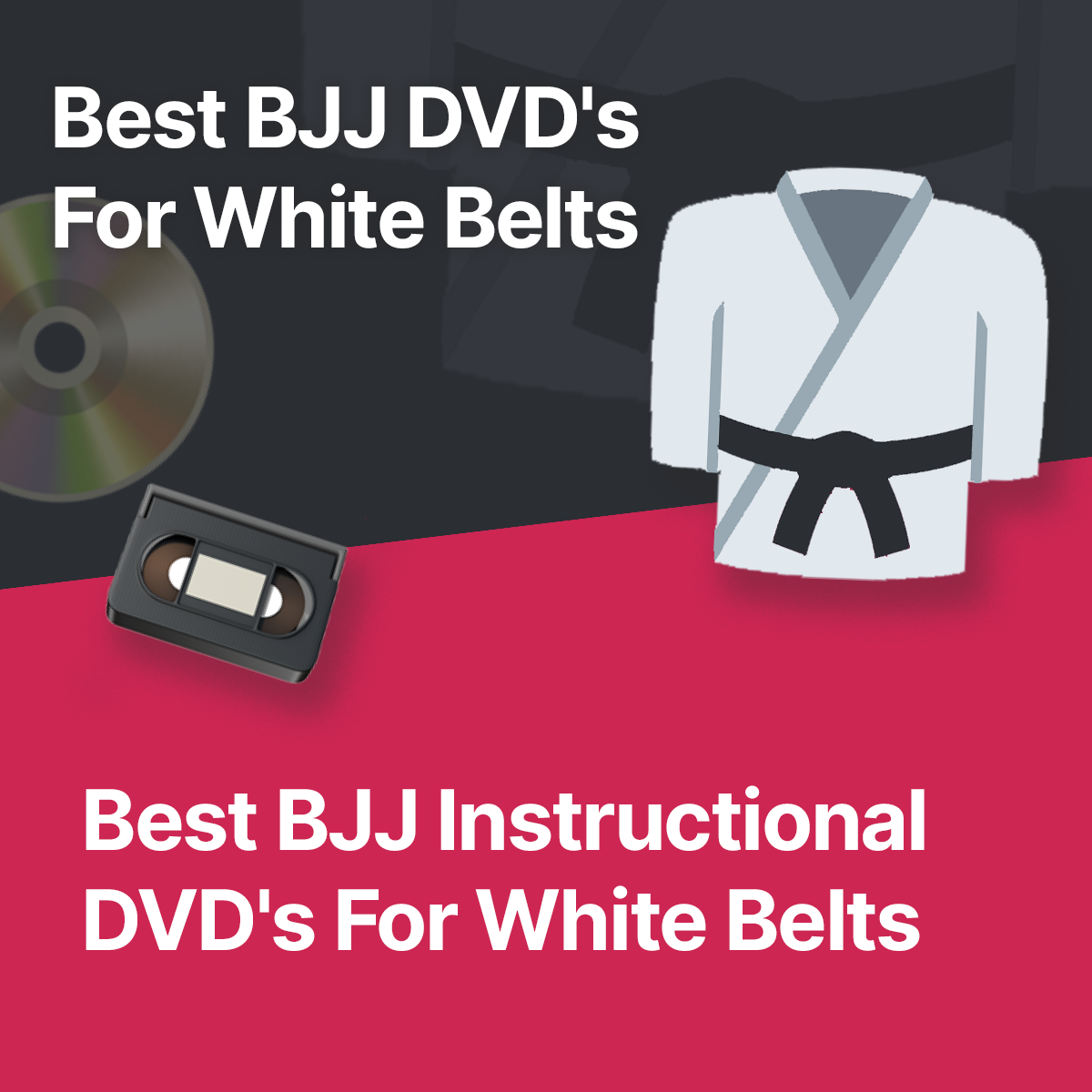When I set out to make this website, I was a brand new white belt who wanted to bring get his thoughts down – a new take on the idea of a ‘BJJ blog’ which is (or at least was at the time) saturated with black belt content, and I wanted somewhere to ask white belt questions and get white belt answers.
It sucks to get smashed all-class, every-class, so I quickly asked, “What DVD’s should I be studying when I’m not in class?”
The idea of a “best” DVD for a bjj white belt honestly doesn’t exist, and ends up being a much larger discussion than you might think.
First off, if you don’t have prior grappling experience, you realistically won’t be doing much submitting or sweeping of anyone for the first few months at the very least, so the first answer you’ll get when it asking what to learn is learn to survive – to get back to a closed guard from any position. Easier said than done, but it is indeed a worthy goal in your jiu jitsu journey.
Okay, there’s the ‘what’, but what about the ‘when’, the ‘where’, the ‘why’ and the ‘how’? How do you go about learning the above? Who teaches it the best?
Today, I’ll break down how I approach discerning good quality BJJ instructionals from bad ones, from the perspective of a white belt.

What makes an Instructional ‘good’ for white belts?
At first this seems obvious… you want the basics… the fundamentals. And that’s (obviously) true, but the fundamentals of which parts?
For learning the various movements needed to progress from white belt to blue belt, you can’t go wrong with Roy Dean’s ‘Blue Belt Requirements’. This seminal DVD set is considered one of the pillars of white belt instructionals and for good reason. It covers most of the moves & movements you’ll need to progress to blue belt, and all the positions you’ll most often be put into as a white belt. Roy Dean is a multiple-degree black belt under Roy Harris.
Of course you’ll want to learn the movements, but what about understanding the bigger picture? In many cases, not being a kind person outside of the dojo (gym) can hold you back from getting a belt, as can arriving late to class. This idea of being a better person, is also ‘fundamental’, but on a martial arts level.
What about improving, and knowing how to improve quickly? How to train, how to keep your body from wear & tear, how to study, how to practice, learn, and know what to focus on learning moving forward?
This is all fundamental information, as well, isn’t it?
Beyond the fundamental movements, what should a BJJ white belt study?
So yeah… of course you want to learn the fundamental movements, but there’s so much more to it. The first thing you learn after learning an armbar, is that no one’s going to let you have their arm… you’re going to have to work for it!
What you learn when learning an armbar is the position needed to get someone to submit, or if you’re lucky, the mechanics needed to break a straight arm at the elbow, but when it comes to actually breaking someone’s defences down into a series of hard decisions that leads to an arm bar and getting the submission, you’re on your own. ?
Learn to escape the various pins from bottom position
Half guard, side control, mount, and back control – trust me, you’re going to need it. Work on either getting out from under someone in every position, or sweeping someone from every position.
For learning escapes, you can’t go wrong with the Pins & Escapes set from John Danaher’s Go Further Faster series. It’s eight DVD’s of how to get out of the various places you’ll get put in… a lot – especially in your first couple years – and one of the BJJ community’s biggest complaints about John Danaher turns into an absolute strength when it comes to going into minute detail of every important detail. He discusses the big ideas, and the small ideas, over and over and over and over.
I get how that teaching style can get stale for upper belts who already know a lot of the details, and ‘get it’ after the first or second time
Once you feel comfortable with a guard, dig deep on it
Whether that means you’re finding submissions from it, or just having some initial fun with the position, look into the DVD’s that cover that position specifically.
They will offer a ton details about the technique that allow you to make it easier to understand and fill in holes you’ve either already noticed, or – more likely – didn’t know you didn’t know.
Pick an movement funnel, flowchart, or sequence and it put it to use
The first time I read about the idea of using a sequence of movements to trap people into a slippery funnel, where every decision they’re faced with puts them deeper and deeper into your trap, the comment said it was an ‘advanced concept’ and ‘not good for a white belt’, but a light went off in my head and it stuck with me. ?
Later, when I was considering purchasing Vagner Rocha’s 50/50 of the Arms instructional, I read a comment that commended it for being a great starting point for white belts to conceive the idea of a funnel (or whatever else you want to call it… flow chart, sequence of events, sequence of movements).
I ended up buying the DVD, and was extremely happy with it – the value of learning how to setup funnels is worth the cost of DVD itself.
My recommended videos and DVD’s for white belts
- Learn the basic moves & movements needed to survive: Blue Belt Requirements by Roy Dean has been the gold standard for some years with regard to the various moves & movements you need to master in order to get your blue belt. He also offers great insight into the mindset you need to be in, in order to progress in Brazilian jiu jitsu.
- Learn to escape from the various pins: Look no further than the excruciatingly detailed instruction from John Danaher in his Go Further Faster series Pin Escapes & Turtle Escapes: BJJ Fundamentals set. He gives you big picture goals, as well as minute detail, while hammering home repetitively the pieces you must, must, must do in order to be successful at escaping pins.
- Learn a system of positions that you can funnel your opponent through: I picked up Vagner Rocha’s 50/50 of the Arms after seeing it referred to as a “game in a box” – and while I use a bunch of the stuff I learned in it, the biggest take away was how to build a “game” off a position you become ultra familiar with.
Other highly recommended DVD’s for white belts
While doing research on instructionals, I came across a comment on Reddit that broke things down even further. I’m including a fragment of that comment as it relates to white belt:
Fundamental Instructionals for White Belts (in the gi)
Bottom 1st, Top 2nd.
- Caio Terra’s Modern Jiu Jitsu
- Damian Maia’s Science of Jiu Jitsu 1 & 2
- Saulo Ribeiro’s Jiu Jitsu Revolution 1 & 2
- Saulo Ribeiro’s Freestyle Revolution (great fundamental no-gi stuff)
IMO White belts should be primarily focused on submission defense & escaping mounts (since those will be the positions they will most usually find themselves in, and it will help build a solid foundation for the rest of their grappling lives) and submissions from top/bottom should be the secondary consideration.
So there are my thoughts on the best instructional DVD’s for a BJJ white belt, from the perspective of a BJJ white belt.
What do you think? Leave a comment and let me know!
